Blind pimples are deep bumps that form under the skin. They can be small or large, red and painful, or nearly invisible. Treatments may include home remedies or antibiotics.
Examples of home remedies include cold or warm compresses, raw honey, and over-the-counter remedies. If these don’t help or symptoms are severe, a doctor may prescribe medication such as antibiotics.
Blind pimples are acne that develops under the skin’s surface.
The pimple isn’t always noticeable, but you can usually feel the lump. The area may be painful or red and slightly inflamed.
Blind pimples usually result from a cyst or nodule under the skin. They differ from whiteheads and blackheads, which develop closer to the skin’s surface.
Blind pimples can be stubborn. They don’t have heads that you can soften or “pop.” In some instances, you may be able to coax an opening to form at the head of a blind pimple.
Various treatments can help get rid of them safely and effectively.
The image gallery below shows what blind pimples may look like.
Blind pimples can be tough to get rid of, but there are many therapies you can try at home. Always make sure your hands are clean before you use any at-home treatment.
Don't squeeze or pop
Blind pimples are too far below the skin to pop. Trying will only irritate them further and may cause infection or scarring. Instead of popping, try to bring the pimple to a head so it can exit the skin via other treatment methods.
Use a product containing benzoyl peroxide
Benzoyl peroxide kills bacteria under the skin. It’s a common ingredient in many over-the-counter (OTC) acne treatments and cleansers.

La Roche-Posay Effaclar Duo Acne Spot Treatment
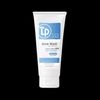
Tutta La Pelle Acne Wash
Apply a warm compress
Warm compresses can help ease pain. They’re also beneficial once a whitehead begins to form. Apply the warm compress for 10 to 15 minutes three to four times a day. This allows the pimple to release pus and heal.
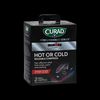
Curad Ironman Hot or Cold Compress

CBDistillery CBD Warming Cream
Apply ice
Ice can reduce pain and swelling. As soon as you notice a pimple forming, wrap an ice cube in paper and apply to the area for 5–10 minutes. Do this twice more, waiting 10 minutes between applications
Wear an acne patch
An acne patch is a small medicated bandage you place directly on the blind pimple. They typically contain acne-fighting agents, such as salicylic acid.
Acne patches can be purchased online or in drugstores. Make sure you follow the directions for use exactly.
Apply tea tree oil
Tea tree oil contains antimicrobial compounds. Products containing tea tree oil may be a gentle alternative to antibiotics and OTC treatments for mild to moderate acne.
For optimum effectiveness, use a product containing 5% tea tree oil or greater. Apply twice a day until the blind pimple heals completely.
Make sure to dilute tea tree oil first with a carrier oil, such as olive oil. Tea tree oil is safe enough for daily use.
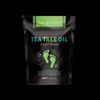
Daily Remedy Tea Tree Oil Foot Soak
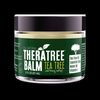
Oleavine Tea Tree Oil Balm with Neem Oil
Apply raw honey
Raw honey is another natural alternative to OTC products. Honey has natural antimicrobial properties that help get rid of bacteria. It may help manage acne and other skin conditions.
Apply a small amount to the affected area and leave on overnight. Raw honey can also be mixed with water as a cleanser.
» MORE: 4 Natural Ways to Get Rid of Pimples as Fast as Possible
If blind pimples don’t resolve easily at home, are especially painful, or seem infected, consult a dermatologist. Prescribed medications, including antibiotics, can sometimes help remove blind pimples.
Some clinical treatments include:
Topical antibiotics
These can help get rid of any bacteria and reduce inflammation. If you get recurring blind pimples, such products may be used around the affected area as a preventive measure.
The most common topical antibiotics for acne include clindamycin and erythromycin. These come in a gel formula that you apply twice a day.
If you have sensitive skin, you may need to apply topical antibiotics once a day and see how your skin reacts before moving up to twice a day.
However, topical antibiotics aren’t effective by themselves. You’ll need to use them in conjunction with another type of acne product, such as benzoyl peroxide. The antibiotic gets rid of the bacteria and inflammation, while the benzoyl peroxide dries out the blind pimple.
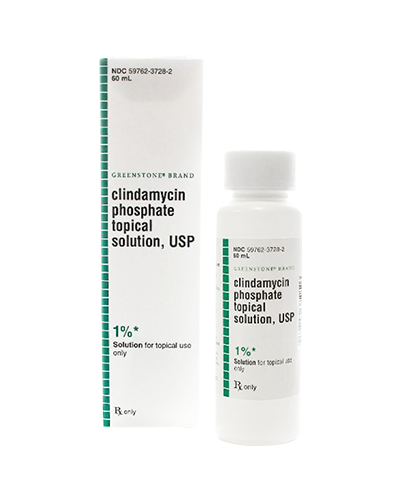
Nurx Acne

Lemonaid Acne Medication
» MORE: How Does Clindamycin for Acne Work?
Oral antibiotics
Moderate to severe acne of all types is often treated with oral antibiotics, such as:
- doxycycline (Actilate)
- sarecycline (Seysara)
- minocycline (Solodyn)
If you have many blind pimples or blind pimples that seem to be infected your doctor may recommend oral antibiotics instead of or in addition to topical antibiotics.

Nurx Acne

Lemonaid Acne Medication
Cortisone shots
Very painful, large, or swollen blind pimples may be treated with a cortisone injection. Your doctor will inject a diluted cortisone solution directly into each blind pimple.
Blind pimples can develop when sebum (oil), bacteria, and dirt become trapped deep within a hair follicle. The end result is a painful lump under your skin that doesn’t have a “head” as other pimples might have.
If you have oily skin, you may be more prone to blind pimples than people with dry skin.
Hormonal fluctuations can also sometimes cause an overabundance of sebum in the skin. This may be most likely at specific times of your life, such as puberty or pregnancy.
Taking certain medications may contribute to blind pimples. These include oral corticosteroids and some birth control options.
Blind pimples can be hard to eliminate, but they’re treatable with patience and care.
Blind pimples differ from other types of pimples. This chart can help you identify the different types of pimples.
| Types of pimples | Characteristics |
| blackheads (a type of comedone) | an oil plug in a hair follicle that has an open head at the surface of the skin |
| whiteheads (a type of comedone) | a closed skin pore that’s clogged with oil, bacteria, and dead skin cells |
| papules | a raised, solid bump or bumps caused by irritation or friction, like shaving |
| pustules | inflamed whiteheads surrounded by a red ring |
| blind pimples (cystic acne) | painful, irritated bumps deep under the skin that don’t have an open head |
Should you try to pop a blind pimple?
It’s generally not recommended to pop a blind pimple, which can lead to inflammation, scarring, and infection. Instead, you can try other methods to reduce its size and promote healing.
How do you get rid of a blind pimple?
Apply a warm compress to the area to help reduce inflammation and encourage the pimple to come to a head. You can also try over-the-counter acne treatments containing ingredients like benzoyl peroxide or salicylic acid.
If it does not go away, a doctor may prescribe medication. Whatever you do, avoid popping or squeezing, as this may make it worse.
How long does a blind pimple last?
A blind pimple typically lasts about 1-2 weeks. However, with proper treatment, it may resolve more quickly.
Why are blind pimples so painful?
Blind pimples are often painful because they occur deep within the skin, where there are more nerve endings. The inflammation and pressure from the trapped bacteria and oil can contribute to the pain.
Blind pimples, also known as cystic acne, form deep within the skin and can be painful to the touch.
While blind pimples are a challenging type of acne to treat, they can sometimes be treated at home. That said, for chronic cases, a dermatologist can help you outline a personal treatment strategy to manage recurring blind pimples.
» MORE: The 25 Best Acne Treatments, According to Dermatologists
